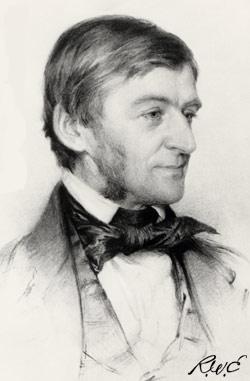
“Love of beauty is Taste. The creation of beauty is Art. ” – Ralph Waldo Emerson
I think Ralph Waldo Emerson was on to something when he said that the love of beauty is Taste and the the creation of beauty is Art. It seems there is an implication that the two are in a polar relationship. Are there people with the innate talent to both understand and coherently structure beauty and create it?
So what is Beauty?
Well that is an endless inquiry that philosophy has sought to answer for millennia! I could discuss it at length but in a nutshell, my interpretation of the Western idea of beauty is conformation. The following of a design to the nth degree, the mathematic and structured adherence to a system, a shape or a colour that fits into the sacred ratio, a sound or a scent that triggers pheromones. Its all angles and harmonies.
What is Taste?
Taste, in my opinion, is the ability to connect ideas of beauty with practical expressions of it. The skill to create a harmonious symphony of form, line and features that make a coherent and ordered sense that most people experience as awe and that only others with a heightened sense of taste can reinterpret and decipher.
Do Artists possess Taste?
Massive generalisations aside, I have yet to meet an artist that simultaneously possesses the skill to produce Beauty and follow it through with order and taste. The nature of the artist is to accumulate, collect, abstract, influence and be influenced. They are not simply taking raw materials and making them fit. They are taking raw materials and transforming them into the essence of their own thought, usually with no attention to the production of other items. Don’t get me wrong, artists understand Beauty or at least how to produce it, but Taste, Taste is an almost O.C.D feature of the Human mind, the ability to objectively critique and place objects and works within a context and their environment. This relentless objectivity is where the Artist will usually fall.
In creating beautiful objects, the Artist is elevating their own creations to a place that beckons others to adore, behold and desire. This, without exception, gives the Artist a sense of value, an emotional and moral currency that is exchanged when the object is acquired. The artistic process, in itself, is fueled by the ego of the artist, an expression of their mind, a machination of their emotion, skill, influence, and desires. The ego is then affirmed by the possession of the work by another individual. Instantly the Artist’s judgement is tainted with their own individual experience. They can no longer be objective when assembling an essence or taste.
I have seen many artists’ homes and studios and have noticed one reoccurring thematic signature. The distinct lack of a consistent theme. Being visual creatures and in someway depending on objects to create, Artists tend to behave like magpies, collecting objects big and small that may inform their work or simply offer a method of practical assistance. It is eclectic style that takes the place of taste. In their studios, in their homes and in their work.
So who are the arbiters of taste?
In todays world that honour could easily be placed upon the media. The magazines, Vogue, Wallpaper, Tattler, ID and the endless others that profess to know the secret to fitting in, being individual by being the same. The new kid on the block, however, is the blog. Once again the individual can be just that, individual. The collective opinion no longer cements authority. Taste has evolved. Websites such as The Coolhunter and the re-kindling of the Bauhaus flame has brought the youth market to the forefront of modern contemporary Art & Design. Publication is no longer paramount to success.
The new media is the style bible, flexible, amorphous and young. But surprisingly, despite the renaissance of youth cool in design, traditional models of design are still adhered to.
Does Taste Actually Exist?
Taste, it seems, has lost its Canon. We are no longer sheepishly following the musings of the select few designers, artists, craftsmen and academics. We have learnt to validate our own opinion as being equal to if not greater than, that of the traditional sources of taste and style. An awareness of fashion, taste and style has permeated the masses and we no longer face the magnolia dilemma of middle class conformity.
Quirky, different, outlandish, bizarre, random, individual and collective have all become acceptable and expected notions of taste. Our homes, dwellings, work spaces and environments are influenced by our incessant nature to acquire, modify and change, with regular re-fresh and re-design a common vein amongst those who can afford to.
IS THIS THE DEATH OF TASTE?…


I don’t think it is. Similar to Emerson I’d like to think that taste is natural and maintains a much deeper connection to the human condition. It is not something that can be turned off or on or something that someone conforms to unwillingly or objectively.
My distinctions between taste and beauty is that taste is a more proper aesthetic so to speak, while beauty represents a wide range of emotions. I prefer to use the Apollonian/Dionysian distinction. Apollonian is critical, distinctive, categorical and precise- taste. Dionysian is fluidity, fusing, blending and emotional- beauty.
Both can be irrational and both can be domineering or submissive. Throughout history we’ve seen taste and beauty collide time and time again. There are only too many examples to name. I don’t believe this will halt (nor should it) anytime soon.
[WORDPRESS HASHCASH] The poster sent us ‘0 which is not a hashcash value.